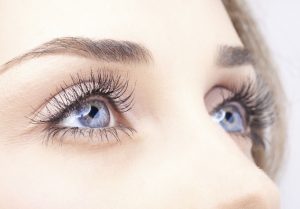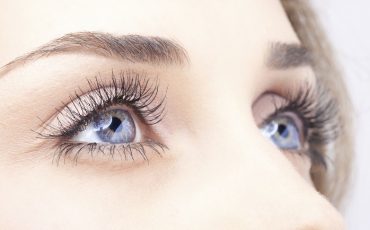 Vision is the process of seeing and perceiving the surrounding environment by using information contained in light. Appropriate visual information is imperative for almost every sporting task to ensure that athletes are able to monitor the actions of others, while also perceiving their position in relation to targets, such as balls, nets, and walls, and the playing environment. In considering vision in sport, this entry discusses what the important characteristics of vision are, whether elite athletes rely on better vision than others, and whether vision training can enhance sporting performance.
Vision is the process of seeing and perceiving the surrounding environment by using information contained in light. Appropriate visual information is imperative for almost every sporting task to ensure that athletes are able to monitor the actions of others, while also perceiving their position in relation to targets, such as balls, nets, and walls, and the playing environment. In considering vision in sport, this entry discusses what the important characteristics of vision are, whether elite athletes rely on better vision than others, and whether vision training can enhance sporting performance.
The Important Characteristics of Vision
Vision is a phenomenon not simply isolated to the eyes. While the ability to see commences at the eye when the cornea and crystalline lens focus light onto the retina at the back of the eye, vision encapsulates a complex procedure that relies on how the brain perceives this array of light. When light is focused on the retina, a complex collection of neural signals is relayed via the visual pathway to the visual cortex in the brain. The visual cortex is located in the occipital lobe at the back of the brain; it processes and combines the visual information from the two eyes and conveys this information onward via a complex communication network that both controls action and facilitates perception of the surrounding environment.
There are many different measures that can be used to characterize vision. Humans have the capacity to perceive their surrounding environment clearly, with color, across a wide range of lighting conditions and regardless of whether they themselves or objects within the environment are stationary or moving. As a result, an evaluation of an athlete’s vision can encompass a diverse range of characteristics, sometimes referred to as general visual measures or basic visual functions.
A considerable number of different visual measures have the potential to impact performance in sport. Consequently, it is recommended that athletes have their vision tested regularly (usually every 2 years) to ensure that any problems can be corrected to prevent them from adversely affecting on-field performance. Following are some of the more important visual measures relevant for athletes.
Visual Acuity
Visual acuity (VA) measures the ability of the eye to resolve detail. It is typically evaluated using a letter chart, and is measured by means of the Snellen fraction (e.g., 6/12 or 20/40; the first number in the fraction is the test distance, conventionally 6 meters or 20 feet, and the second colloquially refers to the distance a person with “normal” vision could resolve the same detail). Static visual acuity refers to the ability to resolve detail in a stationary target, and is the measure most commonly used to assess vision. Dynamic visual acuity is occasionally tested in sport-specific assessments of vision to evaluate the ability to resolve detail in a moving target. Deficiencies in VA are common in athletes; they are most frequently caused by myopia (poor distance vision) or hyperopia (poor or effortful near vision), and are usually corrected using spectacles or contact lenses.
Contrast Sensitivity
Contrast sensitivity reflects the ability of the eye to resolve differences in brightness. Poor contrast sensitivity is likely to influence an athlete’s ability to see at night or in dim conditions. Contrast sensitivity declines with age and otherwise is most commonly hampered by cataracts (clouding of the crystalline lens) and diabetic retinopathy (retinal disease as a result of diabetes).
Peripheral Vision
Peripheral vision is the ability to see objects that are located away from the direction of gaze. The binocular field of vision extends approximately 190 degrees horizontally and 130 degrees vertically, though the clarity of objects decreases as they move further from the center of the visual field. A restriction of peripheral vision will limit an athlete’s ability to identify or monitor other players or objects that are located in side vision; however, restrictions to peripheral vision are relatively rare and usually only occur in the latter stages of life as a result of conditions like glaucoma (damage to the optic nerve at the back of the eye) and stroke.
Depth Perception
Depth perception is the ability to perceive the distance to, or between, objects in space. It is particularly important in sporting tasks where an athlete must hit or interact with moving objects. The perception of depth is a complex process that relies on specific information from each eye and on the comparison of relative information from both eyes. Accordingly, depth perception can be particularly poor when one eye is notably worse than the other (common in individuals with an eye turn or who have experienced an injury to one eye).
Color Vision
Color vision refers to the ability to perceive different wavelengths of light that are seen as different shades of color. Deficiencies in color vision are usually a result of genetic inheritance, meaning that they are not normally curable. Approximately 8% of males and 0.5% of females experience problems with color vision. The most common form of deficiency causes difficulties when discriminating between red and green colors; this has been shown to be a problem when performing some sporting tasks.
Eye Movements
Six extraocular muscles control the direction of each eye to ensure that central vision can be used to resolve objects of interest with the best possible clarity. Skilled athletes use very specific and efficient eye movement strategies to direct their gaze toward the most informative areas in their visual field and to track and predict the future location of moving objects. Neuromuscular conditions such as multiple sclerosis and strabismus (an eye turn) can affect the ability of athletes to make fast and accurate eye movements.
Do Elite Athletes Have Better Vision Than Other People?
The remarkable skill level of elite athletes has led some to wonder whether these achievements are underpinned by some sort of extraordinary or above-normal level of visual skill. Vision is unmistakably important for the successful performance of many different sporting tasks, and for this reason it may be intuitive to infer that superior vision may lead to superior sporting performance. However, there has been, and continues to be, considerable debate about whether skilled athletes have better vision than lesser skilled athletes, and so far the evidence has been somewhat equivocal.
Two key methods have been employed to compare the vision of skilled and lesser skilled sportspeople. The first involves epidemiological studies that evaluate the relative prevalence of visual problems in athletic and nonathletic populations. These studies typically conclude that athletes have a lower (or sometimes similar) prevalence of visual problems than non-athletes. In essence this supports the view that, on average, skilled athletes have better vision, but it more likely reflects the lower likelihood that people with poor vision take part in (or are successful at) sporting activities. The second method of investigation directly compares specific visual attributes like VA and contrast sensitivity across different levels of sporting expertise. Although the evidence is equivocal whether these attributes can differentiate players of contrasting skill levels, a growing number of studies suggest this may not be the case.
Multidisciplinary examinations of sporting expertise have provided a useful means of establishing the relative contribution of general visual measures when compared to other factors that can predict sporting skill. These analyses have generally concluded that sport-specific perceptual skills, such as anticipation, pattern recall, and decision making, are much better for discriminating skilled and lesser skilled athletes than primary visual attributes can. Although for some there is a prevailing view that skilled sportspeople are characterized by superior visual attributes, there appears to be an increasing recognition that sport-specific measures of perceptual–cognitive skill are more likely than general visual measures to be associated with sporting success.
Can Vision Training Enhance Sporting Performance?
There is considerable debate questioning whether vision training can be used to improve on-field performance. This question requires a consideration of three key questions.
Is Vision a Limitation to Performance in Sport?
Vision is clearly important for success in most sporting tasks; if any visual characteristic were to progressively become worse, it is reasonable to assume that at some level each is capable of adversely influencing on-field performance. What is less clear, though, is at what point each of these characteristics may start to impinge on sports performance. For example, if VA was to be systematically decreased to the point of practical blindness, evidently performance must decrease at some point. In essence, most vision specialists would advocate that normal visual function is necessary for most favorable on-field performance. As a result, any decrease below the normally expected capacity would lead to a commensurate decrease in performance. The small subsection of sports vision specialists who claim that skilled athletes rely on better-than-normal vision to underpin their sporting success infer that even a normal level of visual function limits performance, and that improvements in vision to supranormal levels lead to enhanced sporting performance.
Can Vision Be Improved by Training?
Spectacles and contact lenses are used to correct the most prevalent of visual problems (e.g., myopia and hyperopia); however, clear evidence exists to show that vision training can be used to improve other visual characteristics, such as eye movements and visual focus. Importantly though, this training is typically used to help those with visual problems. While vision training may be useful to help athletes with these types of problems, it is not at all clear whether training can facilitate supranormal vision. Even if normal vision is a limitation to sporting performance, there is very little evidence to suggest that visual characteristics can be enhanced to levels superior to those found in the general population.
Do Improvements in Vision Result in On-Field Improvements in Performance?
Vision training is frequently used to improve the ability of individuals to perform activities of everyday living. For example, training can lead to direct improvements in the performance of visually dependent tasks like reading and computer use by correcting deficiencies in gaze and focusing. Similarly, there is good reason to believe that sporting performance should be improved if vision training can correct visual deficiencies that limit on-field performance. However, there is very little evidence to suggest that the vision of athletes can or should be trained to above-normal levels of operation, or equally that generalized training of a range of different visual measures can lead to improvements in athletic performance.

Leave a Reply